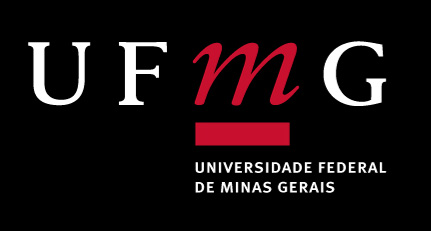The collaboration of the quantiles technique to the identification of extreme rainfall and an approach to detect natural disaster situations in the semi-arid region of Ceará
DOI:
https://doi.org/10.35699/2237-549X.2021.36790Keywords:
Disaster, Drought, Semiarid, Quantis, VulnerabilityAbstract
Natural disasters caused by droughts have caused different impacts in many places of northeastern Brazil. In Ceará State, this phenomenon occurs frequently in areas influenced by the semi-arid climate, characterized by high temperatures and irregular rain season during all the year. The purpose of this article was to analyze the behavior of rainfall in the backwoods region of Ceará through a statistical technique (quantiles) that allows identifying a particular weather event in a semiarid region as normal or extreme and propose an operational definition of natural disaster that permit a better guidance for prevention and disaster responses. To look on these objectives, information consultations were realized in qualified parts related to the topic, bibliographic reviews of concepts such as disaster threat, risk and vulnerability, use of methodologies present in the database and the statistical technique of quantiles allowing behavior analysis rain in the region. The geographical description revealed with reasonable clarity the operating semi-arid of the region and the numerous emergency decrees are certainly strong evidence that the Ceará countryside reside people with the most high social vulnerability and that present difficulties to recover a natural disaster.
Downloads
References
ADAMS, J. Risco. São Paulo: Editora SENAC São Paulo, 2009. 288 p.
CARDONA, Omar Darío. Evaluación de la amenaza, la vulnerabilidad y el riesgo. In: MASKREY, A. Los desastres no son naturales. Colômbia: Red de Estudios Sociales en Prevención de Desastres en América Latina (LA RED), Intermediate Technology Development Group (ITDG), 1993. pág. 51-74.
CARDONA, Omar Darío. La necesidad de repensar de manera holística los conceptos de vulnerabilidad y riesgo. In: INTERNATIONAL WORKCONFERENCE ON VULNERABILITY IN DISASTER THEORY AND PRACTICE. Annals... Wageningen (Holanda): Wageningen University and Research Centre, 2001. 18 p. Disponível em: < http://www.desenredando.org/public/articulos/index.html> Acesso em: 08 nov. 2014.
CRED CRUNCH. Disaster data: a balanced perspective.Louvain, May, 2005. Disponível em: <http://www.cred.be/sites/default/files/CredCrunch01.pdf>. Acesso em: 8 jan. 2015.
DESCHAMPS, M. V. Vulnerabilidade socioambiental na região metropolitana de Curitiba. 2004. 192 f. Tese (Doutorado em Meio Ambiente e Desenvolvimento) - Universidade Federal do Paraná, Curitiba, 2004.
FERREIRA, A. G.; MELLO, N. G. da S. Principais sistemas atmosféricos atuantes sobre a Região Nordeste do Brasil e a influência dos Oceanos Pacífico e Atlântico no clima da região. Revista Brasileira de Climatologia, Presidente Prudente, v.1, n°.1, 2005, p. 15-28.
LAVELL, Allan; FRANCO, Eduardo. Estado, sociedad y gestión de los desastres en América Latina: en busca del paradigma perdido. Lima: La Red, 1996. 520 p.
MENDONÇA, Francisco de Assis. Geografia e Meio Ambiente. São Paulo: Contexto, 2010. 80p.
MONTEIRO, Jander Barbosa. Desastres Naturais no Estado do Ceará: uma análise de episódios pluviométricos extremos. 2016. 256f. Tese (Doutorado em Geografia) – Programa de Pós-Graduação em Geografia, Universidade Federal do Ceará, Fortaleza, 2016.
PINKAYAN, S. Conditional probabilities of ocurrence of Wet and Dry Years Over a Large Continental Area. Hidrology papers, Colorado, n.12, p.1-53, 1966.
TORRES, F. T. P.; MACHADO, P. J. de O. Introdução à climatologia. São Paulo: Cengage Learning, 2012. 256 p.
XAVIER, T. de M. B. S. Tempo de chuva: estudos climáticos e de previsão para o Ceará e Nordeste setentrional. Fortaleza: ABC Editora, 2001.
XAVIER, T. de M. B. S; XAVIER, A. F. S; ALVES, J. M. B. Quantis e eventos extremos: aplicações em ciências da terra e ambientais. Fortaleza: RDS, 2007. 278 p.
ZANELLA, M. E. As características climáticas e os recursos hídricos do Ceará. In: SILVA, J. B. da; CAVALCANTE, T. C.; DANTAS, E. W. C. (Org.). Ceará: um novo olhar geográfico. Fortaleza: Edições Demócrito Rocha, 2007. p 169-188.
Downloads
Published
How to Cite
Issue
Section
License
Copyright (c) 2021 Jander Barbosa Monteiro, Maria Elisa Zanella, Daniel Rodriguez de Carvalho Pinheiro

This work is licensed under a Creative Commons Attribution 4.0 International License.
Os artigos desta revista obedecem a licença Creative Commons — Attribution 4.0 International — CC BY 4.0









